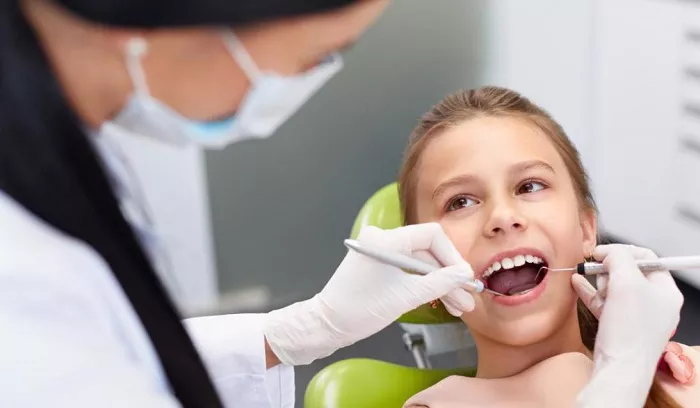Orthodontic treatment is a transformative process that can improve not only the appearance of your smile but also your overall oral health. However, one of the most common questions parents and patients ask is: When is the right age for orthodontics? In this article, we’ll explore the ideal timing for orthodontic treatment, the benefits of early intervention, and how to determine the best age to start.
Understanding Orthodontics
Orthodontics is a specialized branch of dentistry that focuses on diagnosing, preventing, and treating dental and facial irregularities. This includes issues like crooked teeth, overcrowding, bite problems (overbite, underbite, crossbite), and jaw misalignment. The most common orthodontic treatments include braces, clear aligners, and other appliances designed to straighten teeth and improve oral function.
The Importance of Timing in Orthodontic Treatment
Timing plays a crucial role in the success of orthodontic treatment. Starting too early or too late can affect the outcome and efficiency of the process. Here’s why timing matters:
Growth and Development
Children’s jaws and teeth are still developing, making it easier to guide them into the correct position. Early intervention can take advantage of this growth to achieve better results.
Preventing Complications
Addressing orthodontic issues early can prevent more severe problems later in life, such as tooth decay, gum disease, and jaw pain.
Psychological Benefits
A straight, healthy smile can boost self-esteem and confidence, especially during the formative years of childhood and adolescence.
What Is the Right Age for Orthodontic Evaluation?
The American Association of Orthodontists (AAO) recommends that children have their first orthodontic evaluation by the age of 7. This may seem early, but there are several reasons why this age is ideal:
Early Detection of Issues
By age 7, most children have a mix of baby teeth and permanent teeth, allowing orthodontists to identify potential problems before they become more severe.
Monitoring Growth
An early evaluation helps orthodontists monitor jaw growth and tooth development, ensuring that any issues are addressed at the right time.
Planning for Future Treatment
Even if treatment isn’t needed immediately, an early evaluation allows orthodontists to create a long-term plan tailored to the child’s needs.
When Is the Best Age to Start Orthodontic Treatment?
While the ideal age for orthodontic treatment varies depending on the individual, there are general guidelines to consider:
Early Treatment (Ages 7–10)
Early treatment, also known as interceptive orthodontics, is designed to address specific issues while the child is still growing. This phase may involve:
Space Maintainers: Used to hold space for permanent teeth if a baby tooth is lost prematurely.
Palatal Expanders: Used to widen the upper jaw to correct crossbites and create more space for teeth.
Partial Braces: Used to correct specific issues, such as protruding front teeth.
Early treatment can reduce the need for more extensive orthodontic work later.
Comprehensive Treatment (Ages 11–14)
This is the most common age range for full orthodontic treatment, as most permanent teeth have erupted by this time. Treatment options include:
Traditional Braces: Effective for correcting a wide range of orthodontic issues.
Clear Aligners: A discreet option for mild to moderate cases.
Adult Orthodontics (Ages 18 and Older)
Orthodontic treatment isn’t just for kids and teens. Many adults choose to straighten their teeth for aesthetic or functional reasons. Advances in technology, such as clear aligners and lingual braces, have made adult orthodontics more accessible and discreet.
Signs Your Child May Need Orthodontic Treatment
While an orthodontic evaluation is the best way to determine if treatment is needed, there are some signs parents can look for:
Early or Late Loss of Baby Teeth
Losing baby teeth too early or too late can indicate potential orthodontic issues.
Difficulty Chewing or Biting
If your child struggles to chew or bite, it may be due to misaligned teeth or jaw issues.
Mouth Breathing
Chronic mouth breathing can affect jaw development and lead to orthodontic problems.
Crowded or Misaligned Teeth
Visible crowding, gaps, or misalignment are clear signs that orthodontic treatment may be needed.
Benefits of Early Orthodontic Intervention
Starting orthodontic treatment at the right age offers several advantages:
Guiding Jaw Growth
Early treatment can guide the growth of the jaw, creating more space for permanent teeth and reducing the need for extractions.
Correcting Harmful Habits
Orthodontic appliances can help correct habits like thumb-sucking or tongue-thrusting, which can affect tooth alignment.
Simplifying Future Treatment
Addressing issues early can make comprehensive treatment faster and more effective.
Improving Oral Health
Straight teeth are easier to clean, reducing the risk of cavities and gum disease.
What If You Missed the Ideal Age?
If you or your child didn’t receive orthodontic treatment during the recommended age range, don’t worry—it’s never too late to achieve a straighter smile. Adult orthodontics has become increasingly popular, with options like clear aligners and lingual braces offering discreet and effective solutions.
How to Prepare for Orthodontic Treatment
If you’re considering orthodontic treatment for yourself or your child, here are some steps to take:
Schedule an Evaluation
Consult with an orthodontist to assess your needs and determine the best course of action.
Discuss Treatment Options
Ask about the different types of braces or aligners available and which option is best suited for your case.
Plan for Maintenance
Orthodontic treatment requires regular check-ups and proper care to ensure the best results. Be prepared to follow your orthodontist’s instructions closely.
Consider Costs and Insurance
Orthodontic treatment can be a significant investment. Check with your insurance provider to understand your coverage and explore payment plans if needed.
Conclusion
The right age for orthodontic treatment depends on individual needs and circumstances, but early evaluation and intervention can make a significant difference in achieving optimal results. Whether you’re considering treatment for your child or yourself, consulting with an experienced orthodontist is the first step toward a straighter, healthier smile.By addressing orthodontic issues at the right time, you can prevent complications, improve oral health, and boost confidence. So, don’t wait—schedule an evaluation today and take the first step toward a lifetime of smiles!

